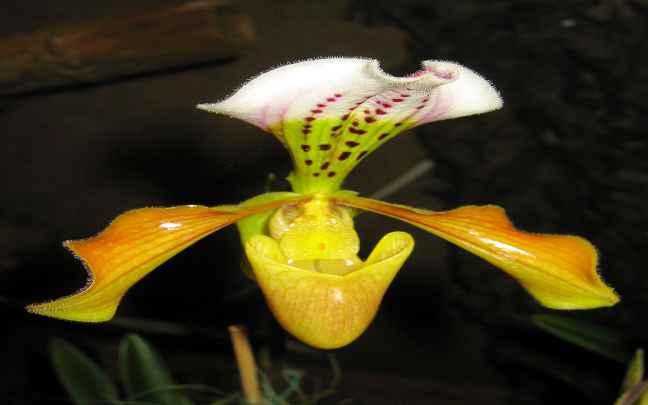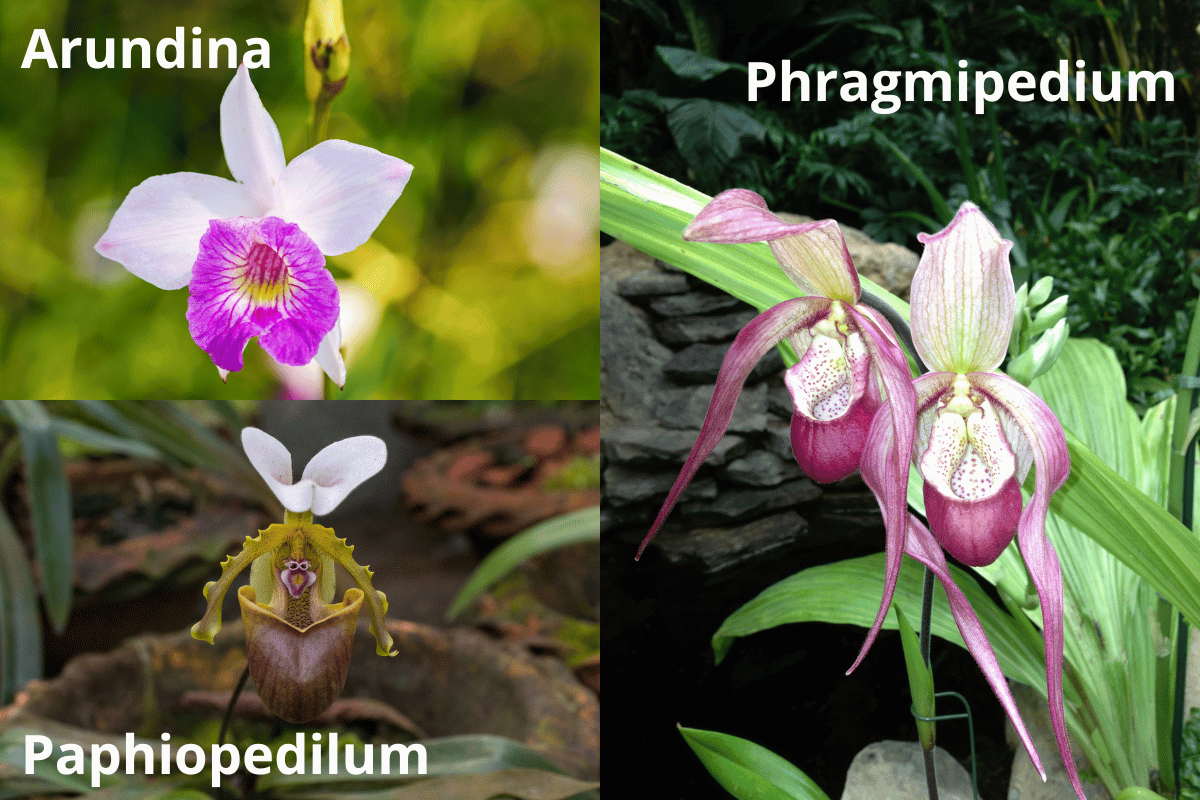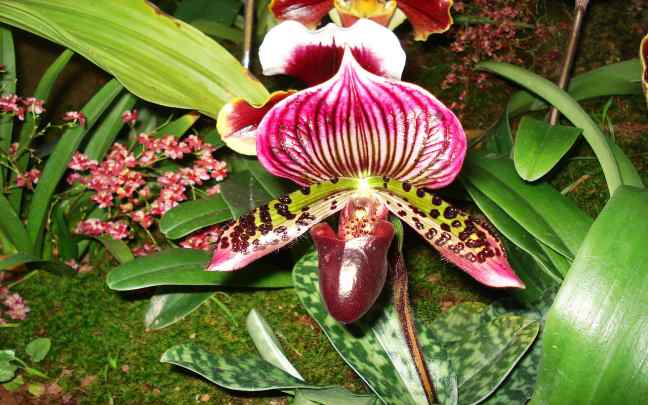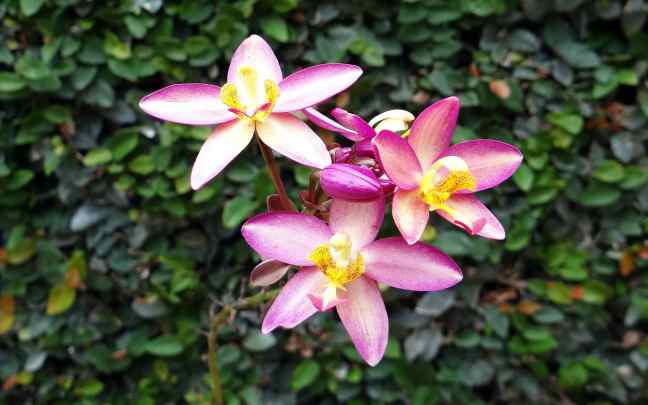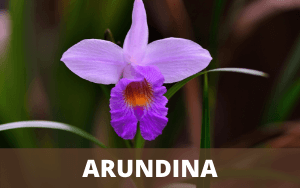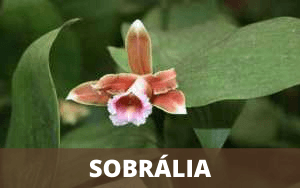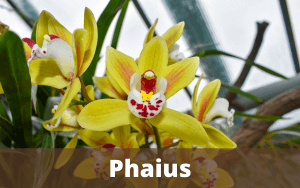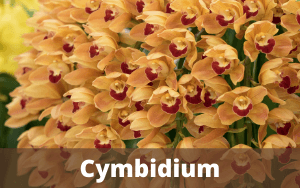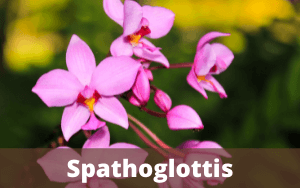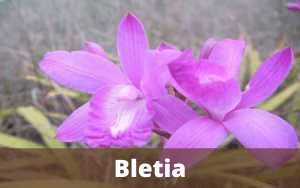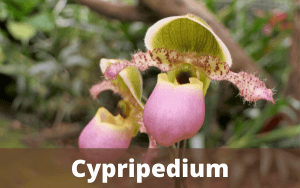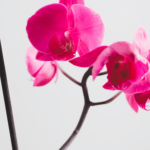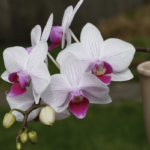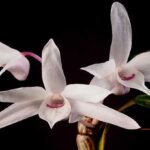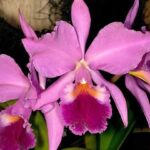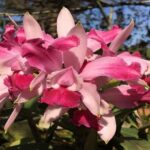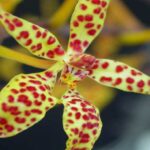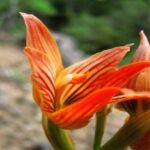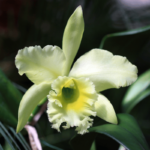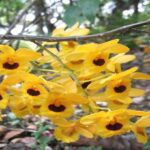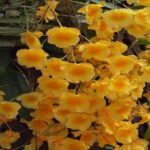Terrestrial orchids, also known as ground orchids, are found in nature growing in the soil.
This soil is specially composed of organic materials like humus and fallen leaves that aid in the plant’s development.
Terrestrial orchids are very famous for their resistance and the beauty of their flowers.
And in this article, you will learn various interesting facts about them.
Learn How to Achieve Super Blooms on Your Orchids
🛑 If you love orchids and you're tired of not being able to make them bloom...
Then, know that thousands of beginner growers are achieving beautiful flowers on their orchids by following this method.
Click the button below to have beautiful orchids with show-worthy flowers every year. ⤵
Characteristics of Ground Orchids
Found in very fertile forest spaces, these orchids have some very interesting characteristics.
Firstly, they live in places with a lot of humus and have two underground tubers. This humus absorbs a lot of water, which has led terrestrial orchids to develop a great tolerance to humidity in their roots.
However, be very careful not to overwater during cultivation.
Regarding the number of species, there are thousands, but few are commercially valuable.
Most of these orchids are found in forests, often mistaken for normal terrestrial plants.
Why Are They Called Terrestrial Orchids?
There are thousands of orchids worldwide.
Each one has its own characteristic and beauty, and due to this great diversity, forms were created to classify orchids.
One of these forms, was the classification based on where orchids live, which was divided into 5 categories, meaning an orchid that lives supporting itself on trees has a different classification from the one that lives on rocks.
- Epiphytes are orchids that live hanging on trees (example: Phalaenopsis orchids)
- Rupicolous or lithophytic orchids live on rocks (example: Epidendrum)
- Terrestrial orchids live on the ground (popularly known as ground orchids).
- Humicolous orchids live in decomposing organic material and perform photosynthesis.
- Saprophytic orchids live in decomposing organic material, but do not perform photosynthesis.
Besides this classification, there are still others.
One example is the genera, as they group orchid species with very similar characteristics.
How to Care for Terrestrial Orchids
Due to the great diversity of orchids of this type, these tips cannot apply to all of them. But they will probably work very well for the vast majority.
So do not use these tips as rules, but as a guide for you to test and see if your orchids will like them.
If you want to access a more complete guide on orchid cultivation, see this article.
Temperature and Ventilation
Not only terrestrial orchids, but all orchids must have adequate ventilation.
This way, your orchid will be more resistant and also more beautiful.
To provide the ideal temperature for these orchids, see the information below:
- In most cases, they are very resistant to low temperatures.
- When the cold is extreme, they go dormant for a year, without blooming.
- Although this may seem like a disadvantage, many orchids in extreme cold (12°C / 53.5°F or less) are at risk of dying, while terrestrial orchids can survive.
- The ideal temperature depends on the orchid, so seek more information about your species to know what it needs.
How to Fertilize and What Substrates to Use
Ground orchids usually do not need constant fertilization.
This happens because most of the nutrients they receive come from the substrates and the soil they are planted in.
But if you want to fertilize your plant, I recommend using balanced fertilizer.
- NPK 20 20 20
- NPK 10 10 10
Be very careful not to over-fertilize them.
Regarding substrates, below are some of the best options for these orchids:
- Charcoal
- Pine bark
- Humus
- Soil with a lot of organic material
How to Water and Proper Lighting
To learn how to care for ground orchids, it is necessary to know the right time to water them and also the ideal lighting.
Usually, forest orchids love water very much.
To check if they need water:
- Put your finger and sink it a little into the substrate of your orchid.
- If it is dry or slightly moist (almost dry), water.
- But if it is quite humid, wait another day and check again.
Watering typically occurs 2 to 3 times a week.
As for lighting, it should always be indirect.
How to Plant
They can and are usually planted in large, deep pots using humus substrate with fine tree bark.
When planting in the pot or in the ground, add a lot of topsoil and also many organic compounds so that drainage is very efficient.
The pot is usually very large due to the size of terrestrial orchids, which are generally very large.
To plant it in the ground, simply:
- Make a hole in the ground
- Fill it with organic compounds
- Place your orchid.
But before planting your orchid, make sure it is indeed terrestrial; for example, some cymbidiums can be planted in the ground, while others cannot.
Remember to plant it in a clean place, with indirect sunlight, good humidity, and ventilation.
Do You Want to Learn How To Keep Your Orchids Healthy And Ready to Bloom Every Year?
So, I prepared a complete guide, step by step and illustrated, that will show you:
• The secrets to getting beautiful flowers every year
• How to fight and identify pests and diseases on your orchids
• THE MAGIC SUBSTANCE for orchids and how to use it
• And much, much more.
The great news is that the manual is now available at a super discount!!
But beware, it's only for the first buyers.
Click on MORE INFORMATION below and discover the secrets to show-worthy flowers. 👇
Types of Ground Orchids
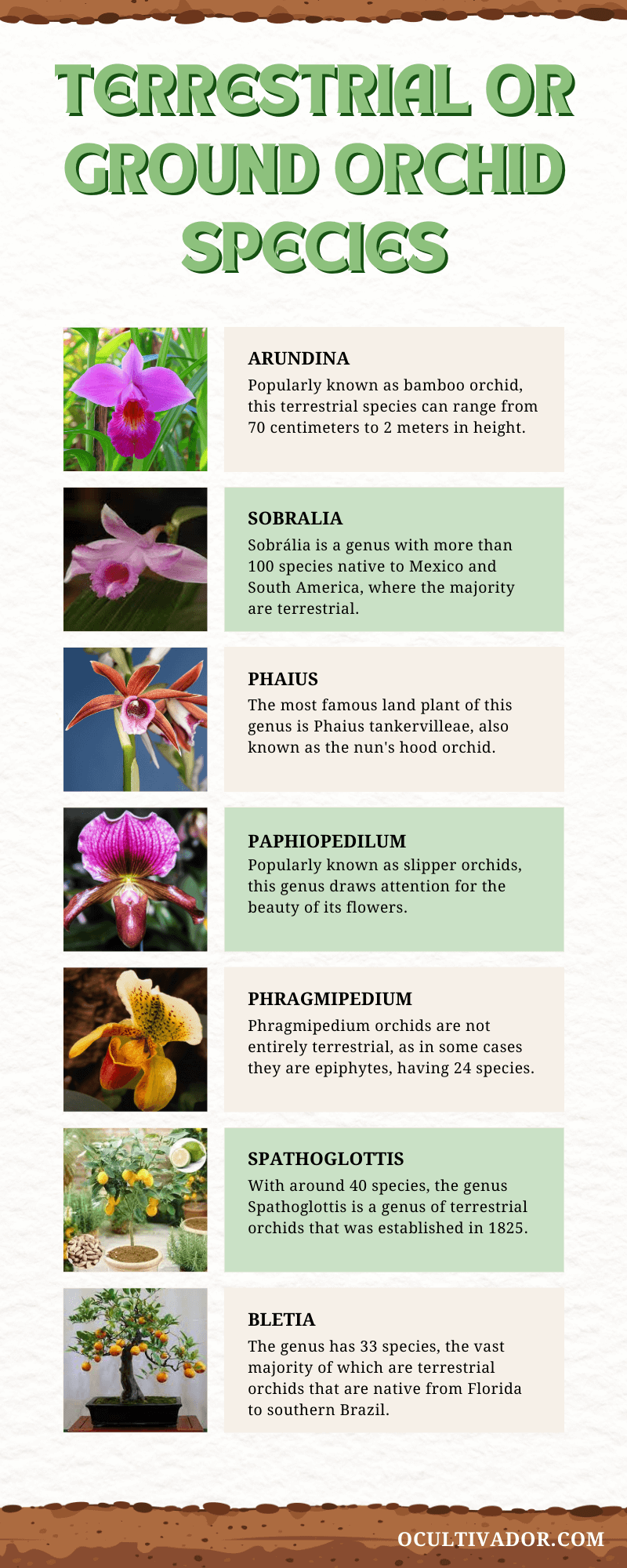
The types mentioned below are entirely or predominantly terrestrial orchid species.
- Sobralia
- Phaius
- Arundina Orchid
- Paphiopedilum
- Phragmipedium
- Cymbidium (some species only)
- Spathoglottis
- Bletia Orchid
- Orchis
- Cypripedium
These are the main types of terrestrial orchids, and below, I will talk a bit more about each of them.
Arundina
It is a minuscule genus, having only one orchid, Arundina graminifolia.
Popularly known as bamboo orchid, this terrestrial species can reach from 70 centimeters to 2 meters in height.
It is a perennial orchid, with its leaves being thinner, narrower, and longer, averaging 9 to 19 cm (3.5 to 7.5 inch) in width each.
Its flowering occurs in the autumn and summer seasons, with a maximum of 10 flowers.
These flowers are in pinkish lilac and also, more rarely, entirely white.
Arundina or bamboo orchid is very common in Brazil, especially on the coast of Paraná.
Sobralia
Sobralia is a genus with more than 100 species native to Mexico and South America, most of which are terrestrial and can reach up to 2 meters in height. It was proposed in 1794 by Ruiz & Pavón in the city of Flora Peruvianae.
To care for your Sobralia, you should provide good lighting, high humidity, place it where the temperature varies from 21°C to 29°C (70°F to 84°F) during the day, and at night it gets cooler. Watering is done when the substrate or soil dries out, and repotting is done when new roots are sprouting.
Its leaves are rigid and narrow, and its flowers appear only one at a time, something that can be called terminal inflorescence.
These flowers come in many colors:
- They can range from whitish to lilac or pink.
- Also passing through red, yellow, orange, among other colors.
Phaius
The most famous terrestrial plant of this genus is Phaius tankervilleae, also known as nun’s orchid or swamp orchid.
This orchid can be found in more swampy soils, especially near swamps in tropical regions.
Phaius is native to the following countries:
- New Guinea
- Indonesia
- Malaysia
And many other countries, ranging from China to Madagascar.
This is a genus with all orchids being terrestrial, with about 45 species.
It can have 5 to 10 flowers per flowering and has a wide variety of colors, which caught the attention of many collectors.
This led them to collect them from their natural habitats.
Today, due to this practice, this genus is endangered.
Paphiopedilum
The genus Paphiopedilum or slipper orchids currently has 98 species.
Most of them are terrestrial orchids and grow monopodially.
They are native to China, Laos, the Philippines, and several other countries, being a very famous orchid genus among cultivators.
Phragmipedium
Phragmipedium orchids are not entirely terrestrial, as in some cases, they are epiphytes, with 24 species.
Their roots are fleshy and vigorous, and these plants have few flowers, but they are quite large.
This genus was created by Robert Rolfe in 1896, being native to tropical America.
Phragmipedium species have a sympodial growth.
They prefer high altitudes, usually in places from 400 to 2200 meters above sea level, and as for their flowering, they have a maximum of 15 flowers at a time, each flower being up to 75 cm (20.5 inch).
The flowers can be orange, red, magenta, yellow, etc.
Cymbidium
Cymbidium orchids can be terrestrial, semi-terrestrial, or also epiphytic.
Most of the cymbidiums cultivated are epiphytes.
NOTE: This is not a species with the majority of terrestrial orchids, but I wanted to include it here because few people know that this genus also contains terrestrial orchids.
According to wikimedia, the cymbidium species have 69 species.
This is one of the species most cultivated by orchid enthusiasts, being native to various countries such as:
- Sri Lanka
- Japan
- Philippines
- Among others
It was discovered in 1799 by Olof Swarts and contains thousands of hybrids.
Cymbidium is an orchid that really likes the cold and needs a significant drop in temperature to be able to bloom.
Spathoglottis
With about 40 species, the genus Spathoglottis is a genus of terrestrial orchids established in 1825.
The main orchid of this genus is Spathoglottis plicata.
Native to Southeast Asia and the southwestern Pacific Ocean, orchids in this genus became famous for their scent, which is very similar to the smell of grapes.
Cultivating it is very similar to cultivating bamboo orchids.
Most of the cultivation rules for bush orchids mentioned below in this article apply perfectly to this species.
Their flowers are usually quite large, and the variety of colors is vast.
Bletia
Just like Sobralia orchids, this genus was proposed by Ruiz & Pavón in 1794.
The name is a tribute to the naturalist Luis Blet.
The genus has 33 species, most of which are terrestrial orchids native from Florida to South Brazil.
They usually grow on slopes or fields, always below 3000 meters altitude.
Their flowers are lavender or white, with an average size of 4.5 cm (1.77 inch), and they bloom in spring and summer.
Orchis
The name orchid means “shaped like testicles,” and this name was probably given thanks to the orchids in this genus.
For example, Orchis italica has flowers that look like a naked man.
The orchis genus consists of about 60 species, all of which are terrestrial and can be found in Europe, Asia, and Africa.
Cypripedium
Cypripedium is an orchid very similar to paphiopedilum.
It is found mainly in very cold environments and would hardly adapt to very hot climates.
It is native to the following regions:
- Alaska
- Siberia
Today, it is becoming an increasingly rare genus, as over the years its natural habitat has been decreasing, and illegal orchid collection is hindering its development.
Some Common Questions
This is an update of this article, where I will list some common questions I have encountered about this type of orchid.
1 – What are ground orchids, or earth orchids?
Ground orchids or earth orchids are synonyms or popular names for terrestrial orchids.
2 – Are there white terrestrial orchids? And yellow ones?
Yes, examples would be the white bamboo orchid, and in the case of yellow ones, several cymbidium orchids.
3 – What are the most famous terrestrial orchids?
- Lady’s slipper orchids (Cypripedium)
- Venus slipper orchids (Paphiopedilum)
- Hardy orchids (Bletilla)
- Spathoglottis
- Phaius
- Habenaria
- Arundina
These are the two main questions I found. If you have any more questions, leave your comment, and I will try to answer you.
Conclusion
I hope that with this article, you can understand a little more about terrestrial orchids, what they are, and what their main species are.
Most of the time, these are great orchids to grow, so do not hesitate and try to have a ground orchid.
If you liked this article, share it with your friends by clicking on the icons below:

